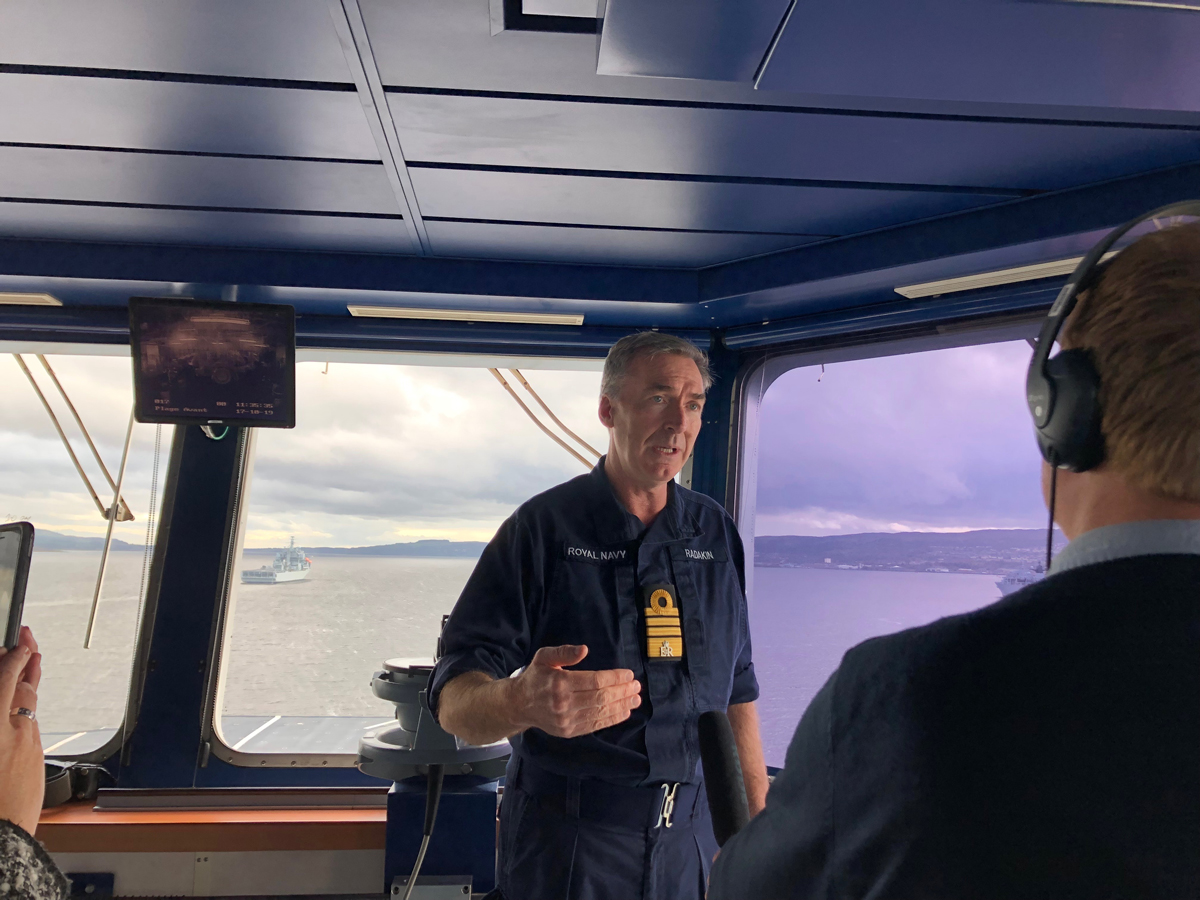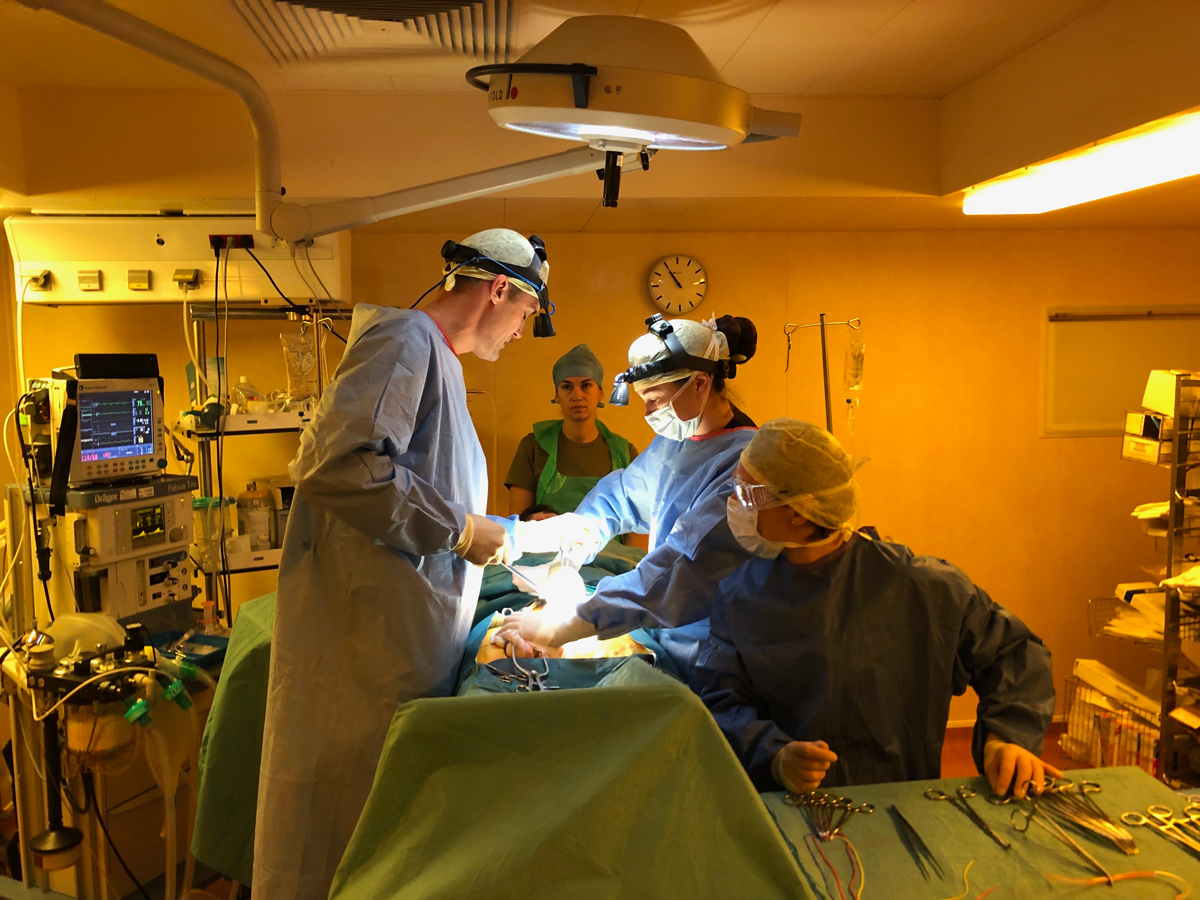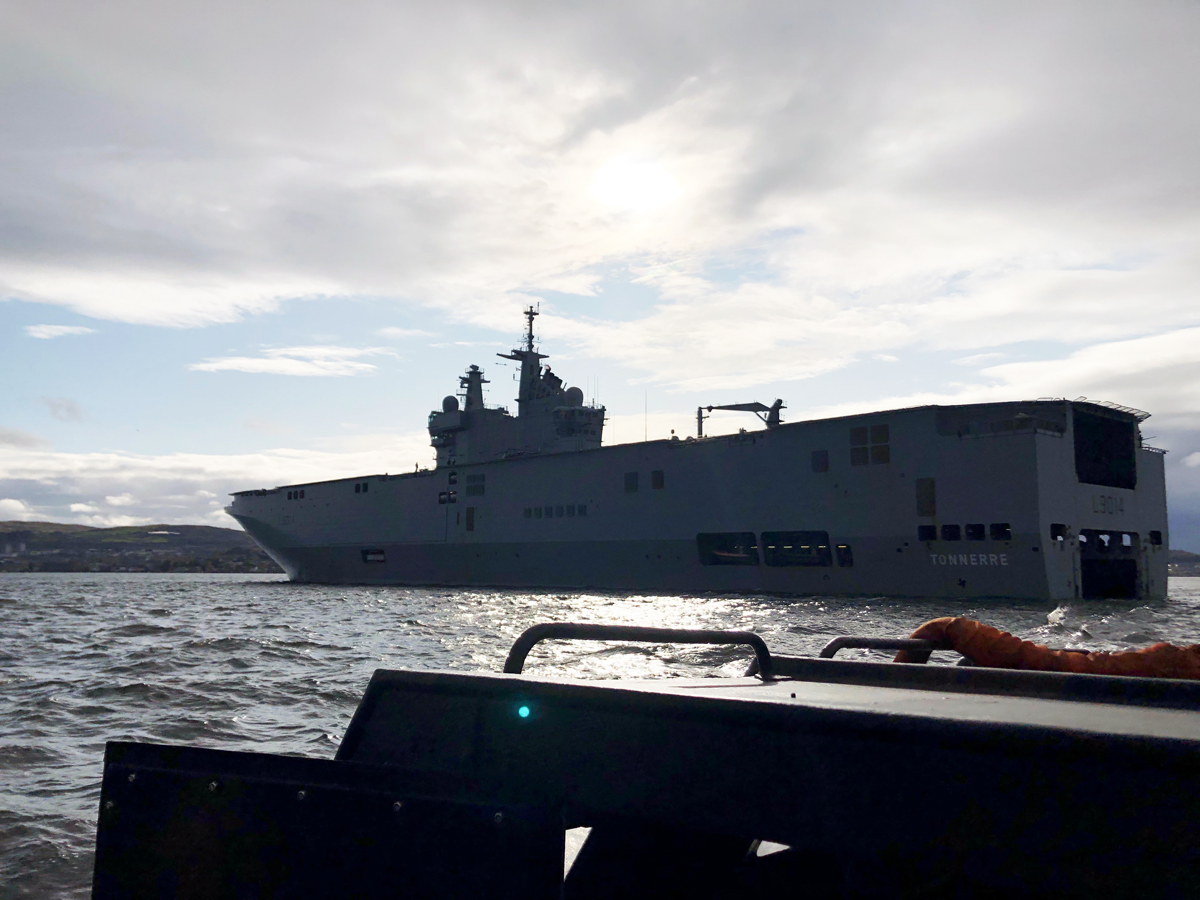special report
At sea with the Anglo-French Combined Joint Expeditionary Force
The British-French Combined Joint Expeditionary Force (CJEF) gives the UK and France a quick-reaction force capable of mobilising at a moment’s notice. Harry Lye joined Exercise Griffin Strike in Scotland to see the CJEF in action and speak to the chiefs of both countries’ navies.


// A French Alouette 3 helicopter lands on the FS Tonnerre. Image: Crown Copyright / MOD
The Combined Joint Expeditionary Force was created in 2010 when the UK and France signed the Lancaster House Treaty in a bid to step up their defence collaboration on several fronts.
This year’s Exercise Griffin Strike, taking place in October, marked the full operational capability of its maritime component - a key milestone in the development of the force. The chief of the Royal Navy, First Sea Lord Admiral Tony Radakin, explained the significance of this.
“These are two NATO nations working more closely together,” he told us on a visit to the exercise in Scotland. “What it means is that at its heart, it creates more political choice for both of our governments. If there was a particular situation where we wanted to respond potentially more quickly than taking the time for all of NATO to agree that we wanted to act, then both our governments might be able to do that.”
This flexibility was echoed in a joint statement released by the two countries at the close of the exercise, which said: “We are determined that it [CJEF] should endure and flourish long into the future.
Equipment and cultural alignment
“We are twins,” the French Navy’s chief, Admiral Christophe Prazuck, said of the UK and France’s military capabilities, talking to members of the press on the bridge on the FS Tonnerre, a French amphibious assault ship which played a key role in the exercise. “We have the same military culture, we are deployed in the same areas, the North Atlantic, Eastern med [Mediterranean], Northern Indian Ocean, we are already operating together.”
This sentiment of close collaboration was echoed by Radakin, who added: “France and the UK are the two leading maritime powers in Europe and so [we are] working with a partner that has similar values, similar interests, but from a military point of view has very similar capabilities, aircraft carriers, nuclear submarines, nuclear deterrents and some great amphibious forces, frigates and destroyers.” He added that this alignment makes France and the UK natural partners in defence.
For Griffin Strike 2019 some 2,000 personnel from both countries worked across 14 ships, three submarines and 15 aircraft to take the joint force closer to reaching its full operational capability. This vast force was controlled by a 50/50 British-French operations room that could be moved between the vessels, featuring a British and French sailor at every position, acting as the bilingual voice of the commander.
For this exercise, the task force was stationed in the bowels of the giant FS Tonnerre communicating in what one sailor described as ‘franglais’ – a cocktail of French and English. The close collaboration between the two countries was apparent in the ease with which personnel from their respective forces moved between each other’s ships in helicopters and landing craft.
As Royal Marines Major Steve O’Sullivan put it, “the Royal Marines and the Troupe De Marines share a long and vibrant history”, with the combined efforts of both creating a harmonised force. “Today Exercise Griffin Strike further enhances our continued maturity and understanding as a joint amphibious force,” he added.
“The maritime element of the CJEF is geared to rapidly deliver personnel where they are needed, allowing for power projection capabilities, no-fly zones and securing of maritime routes.”
Although this particular exercise focused on an amphibious group, the MOD said that the CJEF’s future capabilities will be much more powerful consisting of a mixed carrier group that can support the advance of an amphibious group. Once fully realised the CJEF will easily be able to provide both countries with what Radakin described as the ability ‘to deter or threaten if necessary’.
The maritime element of the CJEF is geared to rapidly deliver personnel where they are needed, allowing for power projection capabilities, no-fly zones and securing of maritime routes. In a capacity exclusive to the UK and France, as Prazuck told us, this is the only force of its kind France shares with another country.
“It also gives us more because we have more mass and intellectually,” Radakin added. “It also gives us more capacity in terms of approaching difficult problems from a slightly different angle, but with a shared perspective in terms of what we're trying to achieve.”

The Royal Navy’s First Sea Lord, Admiral Tony Radakin, speaks to press during Exercise Griffin Strike.
Griffin Strike 2019: training for rapid response
Split into two phases, Exercise Griffin Strike saw the task force first form up en route to the British naval base Clyde at Faslane, Scotland. On arrival the second phase, which the MOD called a ‘tactical phase based on a realistic scenario’, commenced. The task force was deployed to stabilise a fictional region and the threat of a ‘hostile neighbour’ in the area.
A key test of the exercise was testing the force’s ability to respond to a surge in medical incidents. As part of this the 150-strong medial team of the Royal Navy’s hospital ship, the RFA Argus, reacted to a simulated mine strike both on their own ship and on the French Tonnerre. The capacity to respond to large-scale medical emergencies was described as a crucial element of the joint force’s capabilities.
Once fully operational the Argus could become the medical heart of the CJEF. The ship’s capacity for treatment is unrivalled within both the British and French fleets and includes Role 3 medical capability, which allows for surgery to be performed at sea.

British and French medical teams carry out a simulated medical response exercise onboard the RFA Argus.
The future of the CJEF
With the marine element of the Combined Joint Expeditionary Force firmly established, the two countries are working towards operational capability of the force.
The UK’s Standing Joint Force Commander Major General Rupert Jones, who attended the exercise, said in a Tweet: “Great progress towards UK / France operational interoperability in maritime environment with Exercise Griffin Strike off the coast of Scotland. Land, Air and Joint to follow over the next 8 months.”
The ultimate aim for the CJEF is to reach full operational capability by mid-2020 after a decade of preparation and setup work. In the hangar of the FS Tonnerre, Radakin told personnel assembled at the close of the exercise: “I am particularly proud of the past,” a reference to Griffin Strike 2019 being the culmination of all the work both countries have put in since the signing of the treaty in 2010.
Despite the shadow of Brexit looming over the joint force’s future, both admirals pointed out that the defence cooperation between the UK and France would continue and was, as Radakin put it, “bigger than Brexit”.
Prazuck echoed the sentiment, adding: “What I want to say is that no matter what will happen, France and the UK will remain neighbours, will remain with the same kinds of navies, and armies and air Forces [and] defend the same values.”

FS Tonnerre captured from an approaching Royal Marines landing craft.